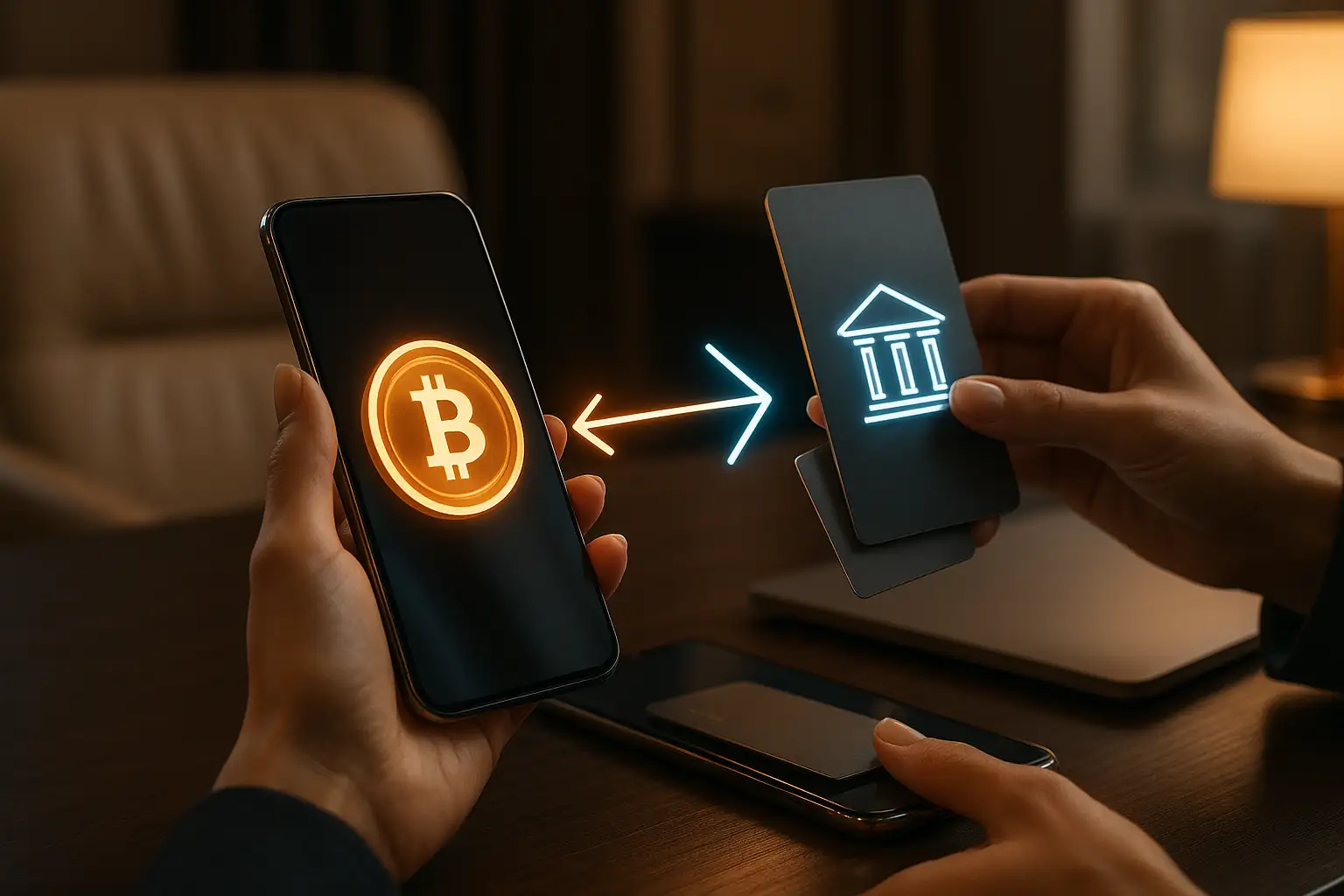
Most people don’t realize it yet, but Wall Street’s most powerful clearinghouse is preparing to overhaul how money moves quietly. And two familiar crypto names are at the center of it: XRP and XLM. For years, XRP and XLM have lived in the shadows of Bitcoin and Ethereum.
While the crypto spotlight chased volatility and meme-driven hype, something deeper was brewing–something institutional. Behind closed doors, the Depository Trust & Clearing Corporation (DTCC) has been developing infrastructure that could fundamentally reshape financial plumbing.
The trigger? A newly uncovered DTCC patent that explicitly names XRP and XLM as tools in a future-facing system of tokenized liquidity. This isn’t clickbait. It’s confirmation.
The DTCC is the largest financial clearinghouse in the world. It handles over $2 quadrillion in securities annually–from stocks and bonds to derivatives and Treasuries. It doesn’t move quickly, nor without precision. So, when it files a patent to digitize liquidity using XRP and XLM, it’s not just speculation–it’s strategy.
According to the official filing, DTCC is developing a digital liquidity token system that tokenizes cash and securities across multiple platforms using blockchain technology.
More specifically, it proposes a programmable, interoperable asset network designed for high-speed transactions across global financial systems. At the center of this model? XRP and XLM.
These tokens aren’t chosen at random. They offer precisely what this system demands: low latency, minimal cost, built-in compliance hooks, and the ability to operate at scale.
In the patent, the DTCC outlines use cases for on-chain liquidity provisioning and settlement that bypass traditional banking inefficiencies. It’s a shot across the bow of legacy clearing systems.
Think of it this way: if the global financial system is a highway, XRP and XLM are being drafted as the asphalt and guardrails for the next generation of fast lanes.
There’s an elegance in their simplicity.
Both XRP and XLM were built from day one to solve cross-border friction. XRP, developed by Ripple, targets banks and financial institutions. XLM, from the Stellar Development Foundation, aims to address the underbanked and payment corridors. Yet both share crucial traits:
· Sub-second transaction speed
· Near-zero fees
· Energy-efficient consensus models
These qualities make them optimal for real-time liquidity functions. Where Ethereum faces gas fee spikes and Bitcoin waits 10 minutes for confirmation, XRP and XLM finalize in seconds. The DTCC isn’t looking for popularity contests. It’s looking for systems that work. And these two protocols just do.
Before 2020, both XRP and XLM were often relegated to side discussions in mainstream finance. But that changed when RippleNet expanded into over 50 countries and Stellar partnered with the Ukrainian government to explore a central bank currency (CBDC).
Their combined track record includes remittances corridors, on/off ramps for stablecoins, and tokenized real estate experiments in Europe and Southeast Asia. They’ve earned their institutional stripes.
In April 2025, Ripple announced its $1.25 billion acquisition of prime brokerage firm Hidden Road. The news raised eyebrows, but the strategic implications quickly became clear.
Hidden Road isn’t just any broker. It’s a quiet giant with membership in DTCC’s Fixed Income Clearing Corporation (FICC), the division responsible for settling over $11 trillion in U.S. Treasury transactions each day.
This move gives Ripple direct exposure to the U.S. Treasury markets and a pathway to introduce XRP into institutional settlement flows. No longer just a tool for international remittance, XRP now has a legal and operational foothold in the very center of U.S. financial clearing.
This is where the dots start to connect.
The prices are in place, with the DTCC acknowledging XRP and XLM in its digital token strategy and Ripple owning a firm embedded in Treasury clearing infrastructure.
· DTCC envisions tokenized liquidity.
· XRP and XLM provide the rails.
· Ripple controls Hidden Road, an FICC member.
This is no longer hypothetical. It’s an integration-in-waiting.
Crypto analyst Digital Asset Investor emphasized this in his YouTube breakdown of the patent. He called it “financial revolution hiding in plain sight.” he’s not wrong. The DTCC’s moves are meticulous. It doesn’t experiment in public. It executes in silence.
This isn’t just about moving money faster. It’s about reshaping who controls the flow entirely.
For retail investors, this signals more than a price rally. It validates years of belief that utility, not hype, will ultimately win. If DTCC onboards these assets, retail users may see:
· Faster bank transfers and lower fees
· Access to real-world tokenized assets
· Mainstream validation of long-term holdings
For institutions, the shift means:
· Real-time settlement with reduced counterparty risk
· Improved liquidity ratios
· Full compliance in a programmable format
It’s the bridging of two worlds–DeFi-grade speed with TradFi-grade trust.
The transformation underway isn’t loud. It’s designed to be quiet. Retail traders chase chart spikes, but institutions bet on reliability and structure. And structure is what DTCC, Ripple, and Stellar are now co-building.
What we’re witnessing is the onboarding of digital assets into the back-end of finance, not as speculative instruments but as infrastructure. That’s a different kind of adoption—one with permanence.
Here’s what this could mean by 2026:
· XRP settles tokenized U.S. Treasuries on DTCC rails.
· XLM supports interoperable liquidity between banks and fintechs.
· Ripple becomes a backbone for real-time gross settlement (RTGS) systems worldwide.
This isn’t about crypto replacing the banks. It’s about crypto becoming the banks.
What makes this transformation feasible is not just tech, but regulation. XRP was once the subject of intense scrutiny from the SEC. But recent rulings and institutional interest indicate that the fog is lifting.
Likewise, XLM’s alignment with humanitarian and banking partnerships gives it a palatable presence on Capitol Hill. The DTCC wouldn’t move forward without clarity. That transparency is now arriving piece by piece.
One area where this shift becomes even more intriguing is the convergence of stablecoins and central bank digital currencies (CBDCs) with these networks. As DTCC modernizes, there’s growing speculation that it could support regulated stablecoins issued on XRP Ledger or Stellar, like USDC or RLUSD.
These assets, already embedded in financial workflows, would enhance programmability and liquidity access in real-time treasury operations.
In such a system, XRP and XLM wouldn’t compete with stablecoins–they’d orchestrate them. Serving as base-layer liquidity tools, they could route value between CBDCs, securities tokens, and fiat onramps, bringing interoperability that today’s siloed banking infrastructure can’t match.
While others wait for a “flipping,” the real revolution is unfolding quietly. The DTCC’s patent, Ripple’s acquisition, and the naming of XRP/XLM all point to one thing: the next era of finance is programmable, digital, and settled in seconds. No headlines. No hype. Just progress.
And if you’re not paying attention, you might miss the very moment crypto stopped being an asset class…
And become the plumbing of the global economy.
On-Chain Media articles are for educational purposes only. We strive to provide accurate and timely information. This information should not be construed as financial advice or an endorsement of any particular cryptocurrency, project, or service. The cryptocurrency market is highly volatile and unpredictable.Before making any investment decisions, you are strongly encouraged to conduct your own independent research and due diligence
Tags :

0 Comments
Show More

Stop losing crypto income to high fees and delays. Learn how on/off-ramps eliminate conversion costs and KYC waiting times, making crypto wages instantly spendable.

For institutional crypto miners, stability is key. Learn how WhitePool's fixed payouts, high security, and low stale rate make it the most reliable mining pool.

Ubuntu Tribe founder Mamadou Toure speaks at Cryptofest on how $GIFT Gold can unlock $50 billion for Africa's unbanked by tokenizing physical gold.
On-Chain Media is an independent, reader-funded crypto media platform. Kindly consider supporting us with a donation.
bc1qp0a8vw82cs508agere759ant6xqhcfgcjpyghk
0x18d7C63AAD2679CFb0cfE1d104B7f6Ed00A3A050
CBaXXVX7bdAouqg3PciE4HjUXAhsrnFBHQ2dLcNz5hrM
Contains the last 12 releases